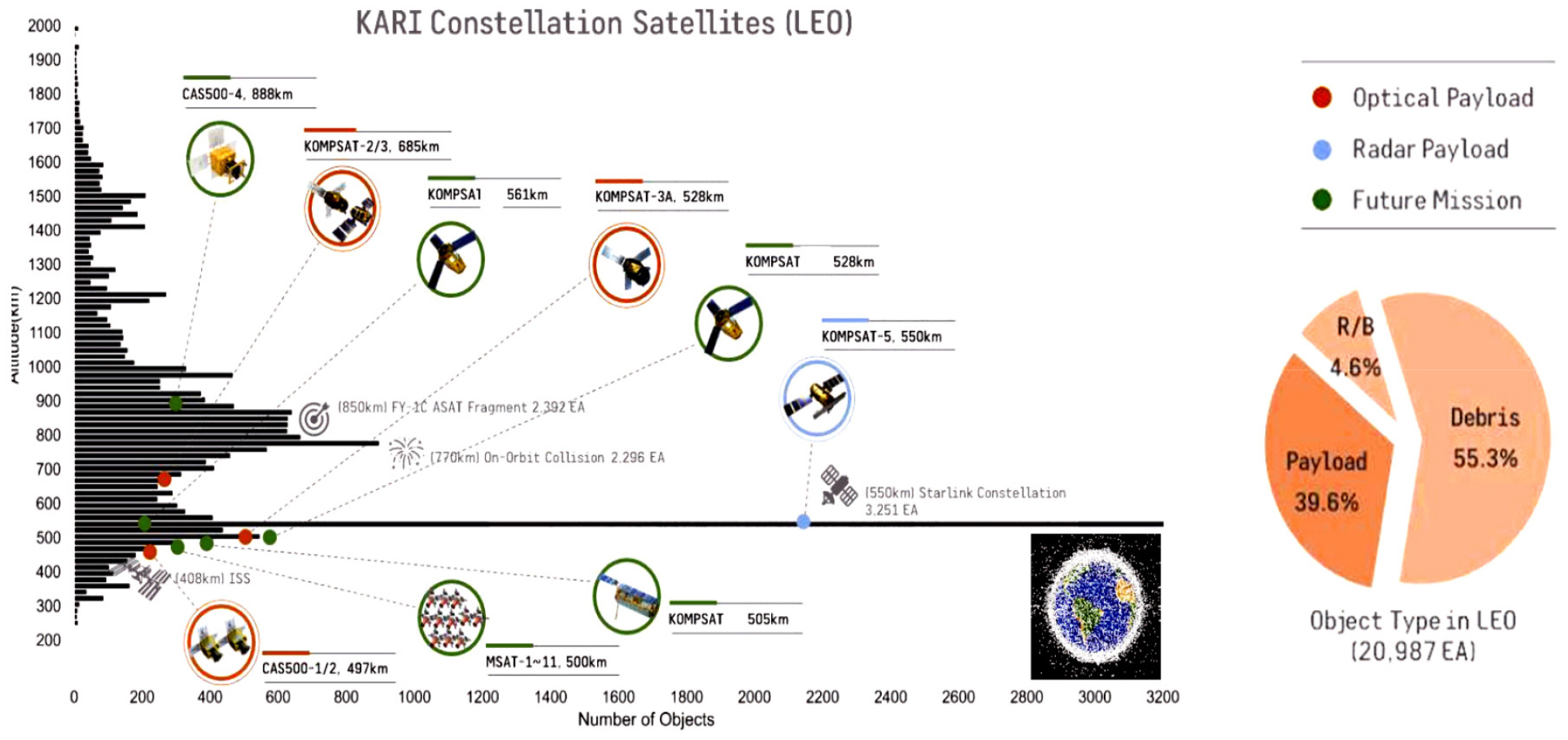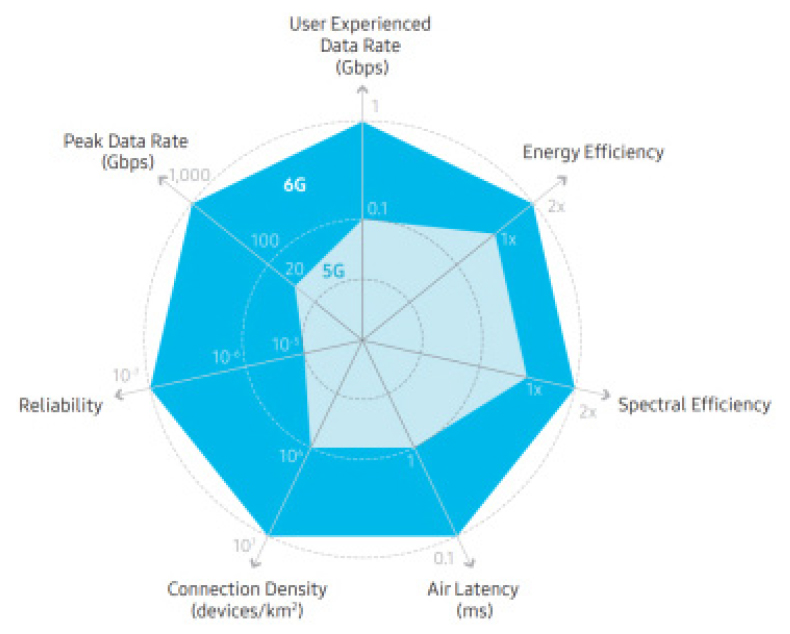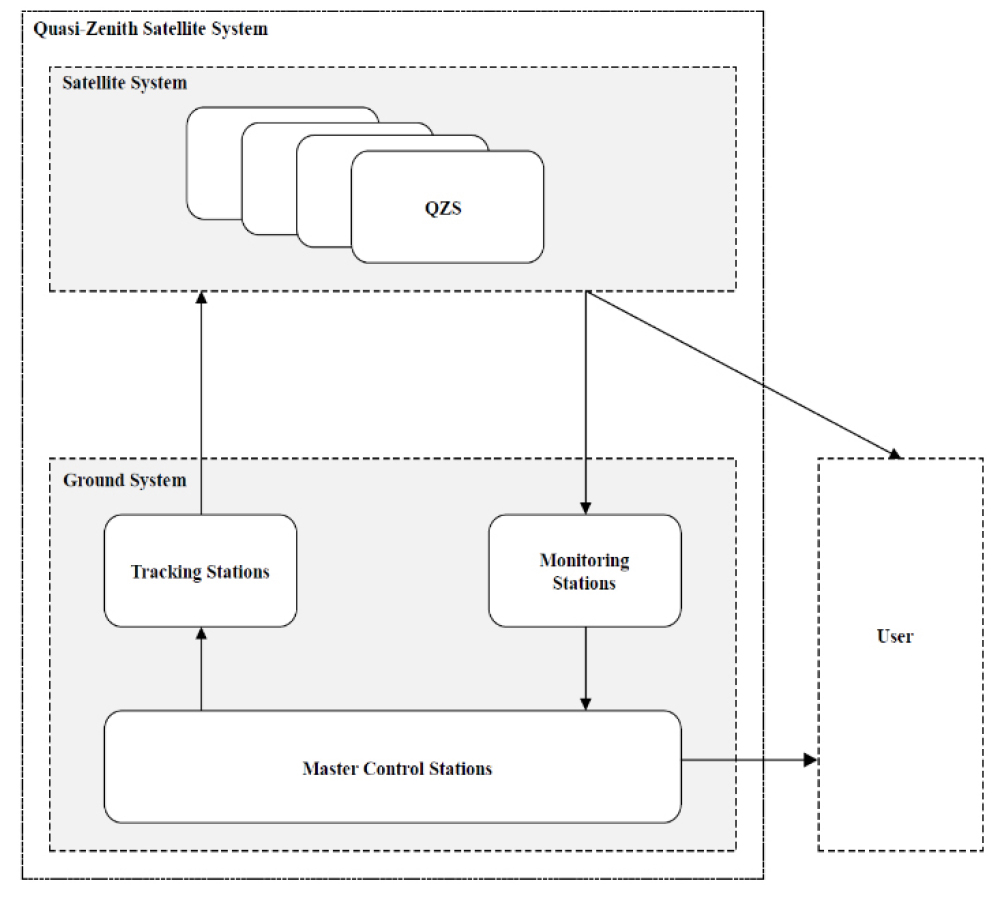-
Research Article

- A study on how to retain space assets for national security and improve usability
- Hyunchul Baek, Okchul Jung, Gabho Jeun, Mina Kim, Saehan Song, Myungjun Lee, Jeongho Lee, Daewon Chung, Taebyeong Chae
- Space security is a new area of national security that is separate from transitional national security. While the spatial location of space …
- Space security is a new area of national security that is separate from transitional national security. While the spatial location of space security is the universe, it involves significant ripple effects on every space on the Earth, including land, ocean, and aerial spaces. Space technology is utilized as a powerful means for human security. This study aims to manage space assets, develop technologies, and establish legal systems for stable and sustainable space activities, comprised of space environment management and Space Situational Awareness (SSA) for space security. To this end, this study presents three specific subordinate projects: “the study on how to establish a space object tracking radar system for security purpose”, “the study on comprehensive satellite operation plans for security purpose”, and “the study on space information distribution plans related to security”. Using a space object tracking radar system for security purposes makes it possible to track Low Earth Orbit (LEO) objects passing over the Korean Peninsula, to generate precise orbit data in an independent way, and to provide imaging data for the objects in space. These information can be mainly used for the conjugation analysis between the national space assets and any approaching secondary space object in a timely manner. Comprehensive satellite operation plans for security purposes provide details about technical performance, operation performance, etc., which should be stated for the handover to the dedicated organization of national satellites developed according to the plan for satellite development for public institutions. These plans specify the roles of developers and operators and manage operation configurations for the regular operation, troubleshooting, and performance management of multiple satellites, By operating various satellites in an efficient and integrated manager and forming a stable network, it becomes possible to establish environments where satellite image data are provided to related departments for satellite control image transmission at domestic and abroad as a control tower for national security. The space information distribution platform utilizes satellite information to solve various social issues, such as environmental energy resources, food security, disaster responds, etc., as the general number of satellite around the globe increases and space technology advances. Satellites information is unique data collected over the entire earth for an extended period in near real-time conditions. This information may be utilized for various areas of human life, and this way of satellite information supply makes it possible to distribute traditional image products and provide cloud-based platform services in either direct transmission or form of subscription. - COLLAPSE
-
Research Article

- Survey on interference management for multibeam LEO satellite networks: Technology, challenges, and solutions
- Wonjae Shin, Jeonghun Park, Hyungkeun Lee
- In recent years, Low Earth Orbit (LEO) satellites have gained significant attention for cost-effective broadband internet services due to their wide coverage …
- In recent years, Low Earth Orbit (LEO) satellites have gained significant attention for cost-effective broadband internet services due to their wide coverage and low latency. Multi-beam transmission techniques have been developed to facilitate efficient frequency reuse and achieve high broadband transmission rates, similar to terrestrial cellular systems. However, increasing available bandwidth by assigning the same frequency band to multiple adjacent beams can lead to mutual interference, degrading overall system performance. Various research efforts have focussed on interference management strategies, particularly in the context of multiple antennas, to mitigate these challenges. This paper provides a comprehensive overview of multibeam LEO satellite systems and surveys the latest research on interference control in such systems. We explore advanced beamforming techniques designed to be robust with imperfect channel state information and discuss the application of rate-splitting multiple access (RSMA) to reduce interference further. In addition, we examine the integration of terrestrial and non-terrestrial networks, focusing on two types of systems: coordinated and cooperative approaches, along with several open problems and future research directions. This article highlights the critical role of interference management in enhancing the performance and reliability of multibeam LEO satellite communication systems. - COLLAPSE
-
Research Article

- Analysis of Japanese regional navigation satellite system and its signal authentication protocol
- Youjin Jeon, Mun-Kyu Lee
- Satellite navigation systems transmit navigation messages, including timing and orbit information, through signals from satellites. However, these signals can be vulnerable to …
- Satellite navigation systems transmit navigation messages, including timing and orbit information, through signals from satellites. However, these signals can be vulnerable to spoofing attacks that forge the satellite signals, because the specifications for modulation and demodulation methods, the structure of navigation messages, and the spreading code sequence of each satellite are publicly available. To address this threat, satellite systems provide authentication services for navigation messages. In this paper, we analyze the architecture of the Japanese satellite navigation system, Quasi-Zenith Satellite System (QZSS), and the signal authentication protocol of QZSS. We also compare its characteristic and authentication performance with those of GPS, Galileo, and BeiDou. - COLLAPSE
-
Research Article

- Research on CubeSat utilization in the space national security
- Hyosang Yoon, Jae-Hung Han, Hyogeun Han
- Since the California Polytechnic State University proposed the reference platform design of CubeSat in 1,999, more than 2,000 CubeSats with various purposes …
- Since the California Polytechnic State University proposed the reference platform design of CubeSat in 1,999, more than 2,000 CubeSats with various purposes have been launched by 2,023 and proved their efficiency. The global CubeSat market is growing rapidly with companies and startups that provide CubeSat-related services, such as manufacturing platforms and components, image processing, constellation management, and launch services. Although the number of research and projects for CubeSat is increasing in South Korea, the development environment for CubeSat still needs improvement. Therefore, institutional support for the domestic CubeSat market is required. This study summarizes the optical technologies in the range of visible light and infrared that can be applied to CubeSat for space national security and the considerations for mounting these optical payloads. Also, a pilot study for laser communication, a new field of space communication using a narrow beam-width laser, was conducted. The target performance of optical payload and constellation system of space national security CubeSats were set by referring to a small satellite constellation example. Additionally, this study proposes laser communication for securing communication between CubeSats and ground stations, along with plans to utilize CubeSat constellations and small satellites in complementary ways. The Department of Aerospace Engineering in KAIST keeps developing technologies that are in line with the rapidly growing CubeSat market, including research on laser communication modules and deployable optical CubeSat. - COLLAPSE
-
Research Article

- Policy recommendations for strengthening the competitiveness of new space security technologies in the new space era
- Il Seok Oh, Jung Hyun Yoon, Sung Hoon Lee
- Korea has not established a national space security strategy, and frameworks for space security, including the public-private cooperation, which is the most …
- Korea has not established a national space security strategy, and frameworks for space security, including the public-private cooperation, which is the most important aspect of the new space era. To contribute to establish a national space security, this study recommended that a national security strategy shall promote the development of space security and space industry, and systematically develop new space technologies, The national space security strategy shall be linked to the National Cybersecurity Strategy and the National Defense Space Strategy. And public-private partnerships for space security should be strengthened under the strategy. By the strategy, Korean government shall create a research and industrial ecosystem for the development of space security technologies, secure the resilience of space systems and services, and develop new technologies. To implement the strategy, it is necessary to overhaul the relevant legal framework. The ‘Basic Law on Space’ (tentative title) should be enacted to regulate the safe utilization and protection of space assets, the development of the space security industry and technologies. The Space Information Operation Regulation should be revised to strengthen space information activities. International cooperation should be expanded based on the U.S.-ROK alliance. Korean government should cooperate with like-minded countries such as the United States, Australia and EU to ensure the freedom of space navigation. - COLLAPSE



 JOURNAL OF SPACE SECURITY
JOURNAL OF SPACE SECURITY





